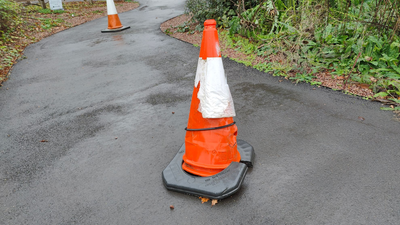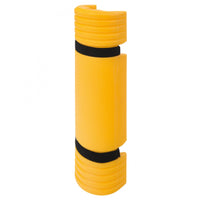Pallet rack safety regulations: how to install pallet racking safely
Pallet racking installations must meet several safety regulations – but what exactly do you need to do to ensure that you remain compliant, and your workforce remains safe?
Pallet racks that are installed without due diligence can be extremely dangerous, especially when they’re loaded with vast quantities of products. If these structures collapse, not only can the damage be catastrophic, but workers can be seriously injured or even killed.
To maximise the safety of your warehouse or storage facility, it’s imperative that racking installations are set up properly and regularly inspected.
The following guide has been put together by Start Safety’s experts to ensure you have all the information you need when to comes maintaining pallet racking safety.
What is pallet racking?
Pallet racking is a cost-effective method of storage used in warehouse and industrial settings. It comprises of upright frames and horizontal load beams that support the pallets.
The system involves the vertical storage of palleted goods and usually requires forklift access.
It’s a flexible and efficient system, as it maximises storage space, allows for goods to be located and accessed easily, and can stand the test of time thanks to durable materials.
Pallet rack safety legislation and guidelines
There are a range of laws surrounding pallet racking, as well as guidelines that managers, supervisors, and those with other health and safety interests in warehouses and storage facilities can follow to ensure they remain compliant.
The legislation surrounding pallet rack safety is covered in several government documents, including:
- Health and Safety at Work Act 1974
- Lifting Operations and Lifting Equipment Regulations 1998 (LOLER)
- Workplace Health, Safety and Welfare Regulations of 1992
- Provision and Use of Work Equipment Regulations (PUWER) of 1998
The Health & Safety Executive guide to Warehousing & Storage, known as HSE76, provides a more digestible overview of the steps that should be taken to reduce the risk of injury.
The guidance has been written in conjunction with the Warehousing Health and Safety Forum and covers general health, safety, and welfare, materials handling, and storage.
When it comes to racking installations, HSE76 suggests that:
- Racking should be erected on sound, level floors, capable of withstanding the point loading at each base plate
- Racking should only be installed by competent people in accordance with the manufacturer’s instructions
- Double-sided runs should be connected and spaced using suitable run spacers
- Racking should have a clear unambiguous notice securely fixed to it, stating the maximum load together with any necessary specified load configurations
- Racking should never be altered (e.g. by welding) nor components removed without first consulting the manufacturer
- You should have systems in place for reporting damage and defects - as soon as a safety problem or damage is observed by any employee, it should immediately be reported
It’s important to consult the full HSE76 document for a comprehensive guide to pallet racking, warehousing, and storage safety.
Pallet rack inspections
HSE76 also includes guidance on pallet racking inspections, such as who should inspect the storage system and how to remain compliant.
It also refers to the SEMA Racking Inspection Guidelines, which offer a deeper dive on pallet racking inspections.
Pallet racking is frequently put under stress, whether that’s from the goods it’s storing or equipment like forklifts. Damage to the racking can impact its load-carrying capacity and lead to the risk of dangerous failures and collapses.
This means that inspections are vital to ensure the safety of workers at warehouse and storage facilities.
HSE76 recommendations
Regarding pallet rack inspections, HSE76 recommends that:
- You should inspect your racking regularly using a three-tiered process for warehouse racking. Check for correct application and use, loads within allowable safe limits, and accidental damage, or dislodgement of structural components
- Visual inspections should be carried out weekly – or other regular intervals based on a risk assessment
- Anyone carrying out the visual inspection will require training
- Expert inspections should be carried out at intervals of no more than 12 months
- Expert inspections should be carried out by highly qualified individuals, such as a specialist from the rack supplier, or an independent qualified rack inspector
Design and installation
The design and installation of the pallet racking system is the primary aspect that should be considered during any checks.
Everything from the upright posts and base plates to the frame bracing and beams should be checked for any visible damage or defects that could impact the system’s structural integrity. The condition of pallets should be assessed too.
Look out for any components that are leaning, loose, dented, twisted, or missing. You should also look out for rust or corrosion, particularly in areas that are prone to moisture.
Signage
The HSE76 guidelines state that racking should have a clear unambiguous notice securely fixed to it, stating maximum load and any necessary specified load configurations.
Check that these signs are present and visible on your pallet racking, and that the weight capacities and maximum load distributions specified aren’t exceeded.
Inspection outcomes
Racking will be categorised into three groups following an inspection:
- Green – areas where damage is sufficiently low to allow the continued use of the racking with no further action
- Amber – areas where the damage is sufficiently severe and warrants remedial work, but not enough to warrant the immediate unloading of the rack. Once the rack is unloaded however, it should not be reloaded until repairs have been carried out. If the storage position is full for four weeks after the initial identification of the problem, the rack should be off-loaded for repair without further delay
- Red – areas where a high level of damage is identified, exceed the indicated industry standard, which warrants an area of racking being immediately offloaded and isolated from future use until repair work is carried out
Pallet racking safety accessories
HSE76 recommends that where racking is likely to be struck by lift trucks and other vehicles, it should be protected using pallet racking safety accessories.
Generally, such damage is at the lower levels of the racking – pallet racking protectors can guard vulnerable areas where there is a high volume of traffic.
Corner uprights in a run of racking are especially at risk too and should be suitably provided with a protective device in a conspicuous colour.
Does pallet racking need to be certified?
Pallet racking doesn’t need to be certified, but it’s advised across many sectors.
Consider industry standards from bodies like the Rack Manufacturers Institute (RMI) or the European Committee for Standardization (CEN), as well as guidance provided by HSE76 and SEMA.
While it is not obligatory, failing to carry out inspections can put employers and warehouse owners at risk if an accident relating to their pallet racking occurs.
If you need further information on pallet racking safety and which products you require, call our trained sales team on +44 (0)1905 794875. We can also discuss special delivery needs and discounts for bulk quantity requirements.
- Author
- Tags











